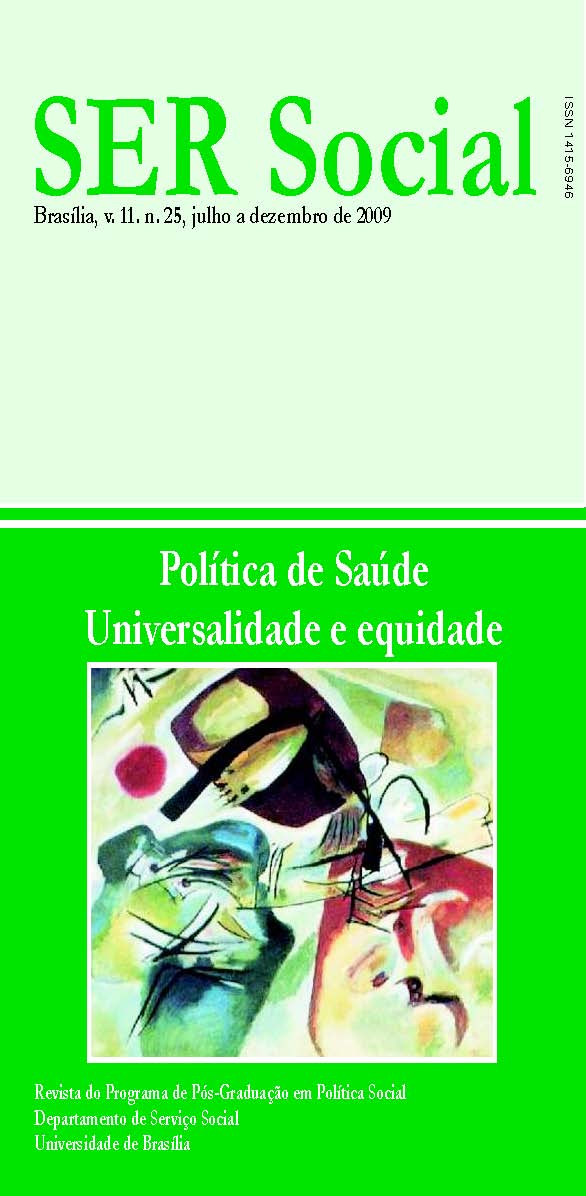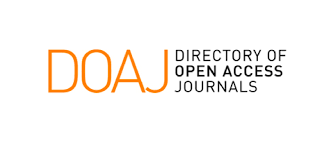The active turn in Danish welfare policy:
Employment and Social Protection in Denmark
DOI:
https://doi.org/10.26512/ser_social.v11i25.12729Palavras-chave:
Flexible labor market, Danish labor market policy, Active labor market policies, MarginalizationResumo
Flexicurity is viewed as the best way of securing both a good investment environment and a secure workforce. Flexicurity combines a flexible labor market, where employers have few or no restrictions with regard to firing workers, with generous welfare benefits; and the two are facilitated through active labor market policies. Denmark really has a flexible labor market; but benefits in case of unemployment and activation cannot be described as generous in a European context. Activation is often perceived as a punishment for being unemployed and has mainly been undertaken because it is mandatory, and one is in risk of losing benefits if one refuses an activation offer. There is a price to be paid for a high degree of flexibility, and it comes in the form of marginalization and exclusion. 25 percent of the Danish population of working ages is for long spells or permanently existing on not very generous benefits outside the labor market.Downloads
Referências
Abrahamson, P. (1998). ‘From passive support to active involvement: Active labor market policy as a major trend in renewal of social policy.’ Paper presented at the Nordic Social Workers’ Association Congress, Thorshavn, the Faroe Islands, June 1998; revised version published in Danish as: ’Efter velfærdsstaten: Ret og pligt til aktivering.’ Nordisk Sosialt Arbeid Vol. 18, No. 3: 133-143.
Abrahamson, P. (2006a). ‘Welfare reform: renewal or deviation?’ J. Campbell, J. Hall and O. K. Pedersen (eds.) National Identity and the Varieties of Capitalism: The Danish Experience. Montreal: McGill University Press, pp. 356-374.
Abrahamson, P. (2006b). ‘La nouvelle portée de l’espace et du lieu quant à la citoyenneté sociale : le cas de l’Union Européenne.’ [‘A new significance of space and place regarding social citizenship: the case of the European Union’] Lien Social et Politiques, No. 56 (Automne 2006): 21-38.
Andersen, D., Appeldorn, A. & Weise, H. (1996). Orlov - evaluering af orlovsordningerne. Copenhagen: National Institute of Social Research, Report # 96:11
Andersen, S. K and M. Mailand (2005). Flexicurity og det danske arbejdsmarked. Copenhagen: FAOS forskningsnotat 059.
Bach, H. B. (2002). Kontanthjælpsmodtagere ”“ aktivering og arbejdsudbud. Copenhagen: National Institute of Social Research, Report # 02:3.
Bach, H. B. & J. Boll (2003). De svageste kontanthjælpsmodtagere. Barrierer for beskæftigelse. Copenhagen: National Institute of Social Research, Report # 03:27.
Bingley, P and N. Westergaard-Nielsen (2002). ‘Return to tenure: firm and worker heterogeneity.’ Aarhus: Aarhus School of Business. Working Paper.
Bredgaard, Th., F. Larsen and P. K. Madsen (2006).’The challenge of identifying flexicurity in action.’ Paper for the workshop ‘Flexicurity and Beyond’ Aalborg 12-13 October.
Brogaard, S. & H. Weise (1997). Evaluering af Lov om kommunal aktivering. Copenhagen: National Institute of Social Research.
Dahrendorf, R. (1994). ‘The changing quality of citizenship.’ B. Van Steenbergen (ed.) The Condition of Citizenship. London: Sage.
Filges, T., I. Harsløv, M. Nord-Larsen (2002). Revalidering: deltagelse, forløb og effekter. Copenhagen: National Institute of Social Research, Report # 02:2.
Geerdsen, L. P. (2003). Marginalisation Processes in the Danish Labor Market. Copenhagen: National Institute of Social Research, Report # 03:24.
Graversen, B. K. & K. Tinggaard (2005). Loft over ydelser ”“ Evaluering af loftet over ydelser til kontanthjaelpsmodtagere. Copenhagen: National Institute of Social Research, Report # 05:4.
Hall, P. (1986). Governing the Economy: The Policy of State Intervention in Britain and France. New York: Oxford University Press.
Hall, P. (1993). ‘Policy Paradigms, Social Learning, and the State: The Case of Economic Policymaking in Britain.’ Comparative Politics Vol. 25, No. 3: 275-96.
Harsløv, I., S. Jensen, A. Kruhøffer, S. N. Møller, A. E. Hansen, A. Rosdahl, (2004). Virksomhedsrevalidering. Copenhagen: National Institute of Social Research, Report # 04:2.
Ibsen, R. and N. Westergaard-Nielsen (2005). ‘Job creation and destruction over the business cycles and the impact on individiual job flows in Denmark 1980 ”“ 2001.’ Aarhus: Center for Corporate Performance, Aarhus School of Business. Working Paper.
Ibsen, R. and N. Westergaard-Nielsen (2007). ‘Medlemsskab af a-kasser og fleksibilitet.’ Jubilæumsbogen for akasserne. Copenhagen: Beskæftigelsesministeriet [Ministry of Employment].
Janosky, Th. (1990). The Political Economy of Unemployment: Active Labor Market Policy in West Germany and the United States. Berkeley: University of California Press.
Larsen, F. and M. Mailand (2007). ‘Danish Activation Policy: The Role of the Normative Foundation, the Institutional Set-up and Other Drivers.’ In Amparo Serrano Pascual and Lars Magnusson (eds.) Reshaping Welfare States and Activation Regimes in Europe. Bern, Berlin, Bruxelles, Frankfurt am Main, New York, Oxford, Wien: P.I.E Peter Lang. (Quoted from manuscript.)
Madsen, P. K. (1992a). ATB: Bedre end sit rygte, men ikke god nok. Skælskør: How.
Madsen, P. K. (1992b). ‘Noget at råbe hurra for? - Om effekten af arbejdsmarkedsprogrammer.’ Samfundsøkonomen 1992 No. 4: 17-24.
Madsen, P. K. (1999). Denmark: Flexibility, Security and Labour Market Success. Geneva: ILO Country Employment Policy Review in selected OECD countries.
Madsen, P. K. (2003). ’Fra arbejdsmarkedspolitik til beskæftigelsespolitik - et skifte i form eller indhold?’ Social Forskning 2003: 3.
Madsen, P. K. (2006). ’How can it possibly fly? The paradox of a dynamic labour market in a Scandinavian welfare state.’ In John Campbell, John Hall and Ove K. Pedersen (eds.): National Identity and the Varieties of Capitalism: The Danish Experience. Montreal: McGill University Press, pp.
Ministry of Social Affairs (1999). Social Tendencies 1999. Copenhagen: Ministry of Social Affairs.
NOSOSCO (1995, 1997, 1999, 2005, 2006, 2008). Social Security in the Nordic Countries: Scope, Expenditure and Financing. Copenhagen: Nordic Social-Statistical Committee.
Social Ã…rsrapport 2003. [Social tendencies 2003] edited by P. Abrahamson et al. Copenhagen: Center for Alternative Social Analysis.
Statistics Denmark (2009). Statistikbanken. Copenhagen: Statistics Denmark.
The Danish Government (2005). The Danish Reform Strategy. Contribution to EU’s Growth and Employment Strategy (The Lisbon Strategy) Copenhagen: Ministry of Finance.
Weise, H. & S. Brogaard (1997). Aktivering af kontanthjælpsmodtagere: En evaluering af lov om kommunal aktivering. Copenhagen: National Institute of Social Research.
Downloads
Publicado
Como Citar
Edição
Seção
Licença
 Todo o conteúdo deste periódico, exceto onde está identificado, está licenciado sob uma https://creativecommons.
Todo o conteúdo deste periódico, exceto onde está identificado, está licenciado sob uma https://creativecommons.
Copyright: Os autores serão responsáveis por obter o copyright do material incluído no artigo, quando necessário.
Excepcionalmente serão aceitos trabalhos já publicados (seja em versão impressa, seja virtual), desde que devidamente acompanhados da autorização escrita e assinada pelo autor e pelo Editor Chefe do veículo no qual o trabalho tenha sido originalmente publicado.










